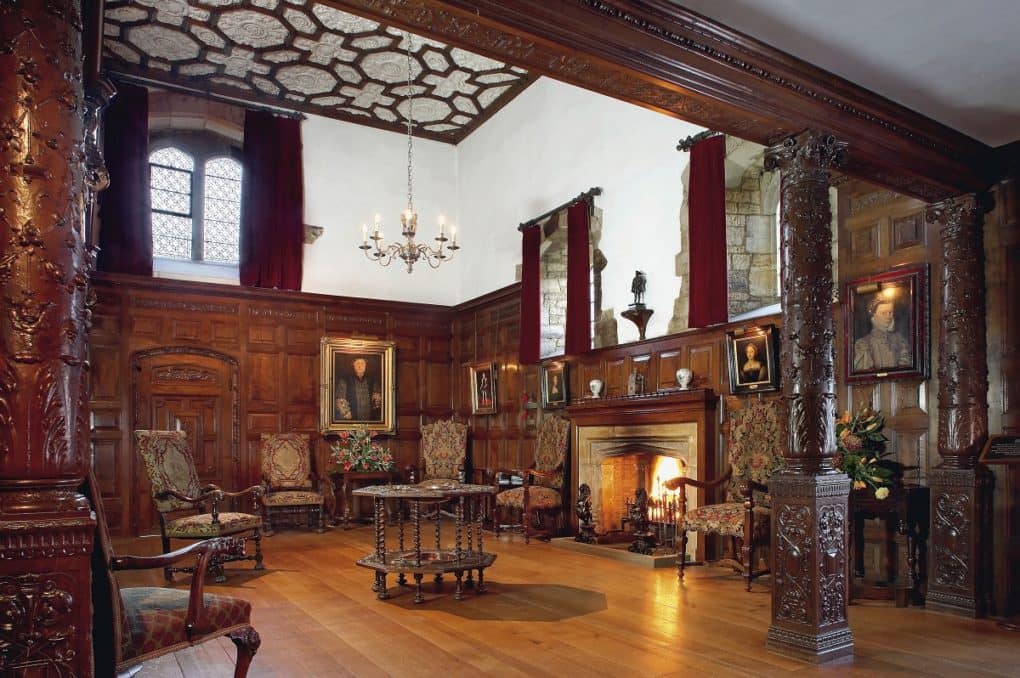

Corbels are the theme for #TudorTuesdays with Historic Houses.
While they may no longer be as common as they once were, corbels are something that many of us will have seen without even realising it. Particularly in the case of those who have visited large churches, or medieval buildings.
Architecturally speaking, corbels are supportive brackets, designed to sit flush against a wall while supporting the weight of a beam, porch, arch or doorway.
In terms of decoration however, corbels are much more varied and unique.
In medieval churches for example—populated as they were by largely illiterate congregations—corbels were frequently carved into the faces of saints, sinners, angels and other assorted biblical figures, in order to help more vividly represent the messages and text being delivered in the sermons, which were predominantly given in Latin. Imagery therefore, was an incredibly important feature of medieval churches, and corbels—as crucial supportive architectural components—helped to play their part.
However corbels were not just carved into the faces of biblical figures. Often, the master stonemason on a large project would make sure to include his own face, immortalising himself forever within the building, and more recently, Chichester Cathedral added the likenesses of Queen Elizabeth II and Prince Philip, showing that decorative corbels are not just a thing of the past.
(N.B. Carvings of faces are more specifically known as grotesques. Gargoyles are similar, but have the added requirement of being drainpipes, channelling rainwater away from the tops of buildings.)
While corbels in churches would predominantly have been made of stone however, corbels found in Tudor houses are likely to have been made of wood, due to the abundance of English oak available at the time, and the relative ease and lowered costs of carpentry compared with those of masonry. As corbels in Tudor houses were not trying to impart biblical messages, the decorations we find here are different, often taking the form of family crests, elegant waves and swirls and, later, fruit and floral imagery.
Due to the nature of their positioning however—frequently tucked beneath more dramatic architectural features—corbels can often go overlooked. However, as with everything in the Tudor and medieval world, they provided an important opportunity to make a statement. For churches, that was via imagery pulled from the pages of the bible. For homeowners, it was about wealth, identity and status.
So the next time you are in a church, or a grand Tudor building, keep an eye out for the corbels and show some love to these ornate, and hugely under appreciated structural supports.
If you enjoyed this item on alcoves why not discover the previous #TudorTuesdays news items:
Book your visit to Hever Castle & Gardens.
Within the grounds of the Hever Castle Estate, there are two opportunities for you to stay the night with us.
Hever Castle has played host to many important events and celebrations for over 600 years. In 1903 when William Waldorf Astor set about restoring Hever Castle to its former glory, he added the Astor Wing, to accommodate his family and guests, before creating a lake and the spectacular Italian Garden to house his impressive collection of ancient Greek and Roman statuary.
There are multiple places to eat & drink across the Hever Castle Estate. Select between the Castle & Gardens and Golf Club below to discover more.
Set in the mature grounds of the Hever Castle Estate, Hever Castle Golf Club is a 27 hole Kent golf course that will encourage and inspire all golf enthusiasts.
Set in the mature grounds of the Hever Castle Estate, the Wellbeing Centre consists of five smart treatment rooms.